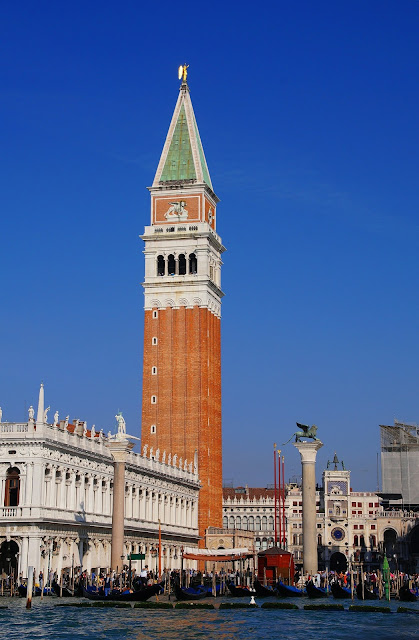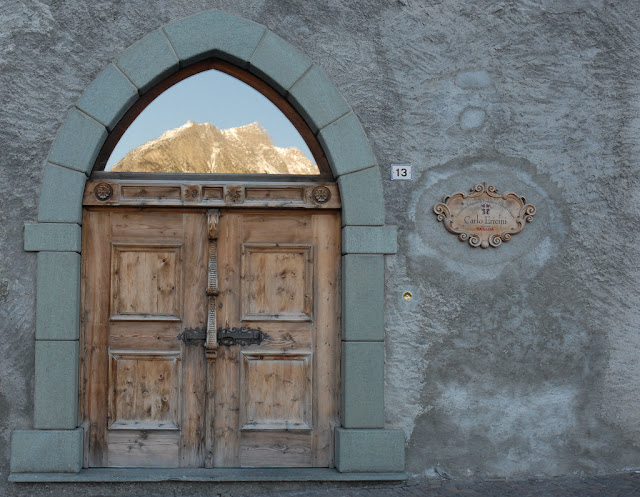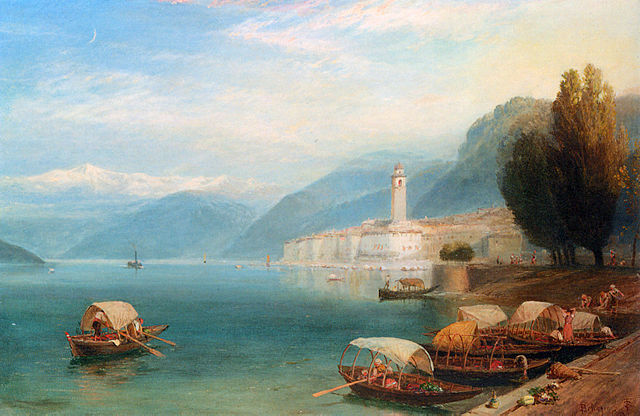Venice - Campanile and Clock Tower
Day 9 & 10 - Explore Venice - Campanile and Clock Tower
The bell tower is lovingly referred to as "The Master of the House". For centuries it was the first sight of Venice for visitors arriving by sea. The tower, which suffered through several fires and a collapse, gained its present-day form in the early 16thC. The plain brick structure stands 324 feet tall and is topped by an arched belfry and gilded statue of the Angel Gabriel. In earlier days, each of the five bells had a specific purpose. The largest rang at the beginning and end of the workday. A second bell rang at midday. The third rang to summon members to council. The fourth announced a session of the Senate, and the fifth bell announced executions.
On August 25, 1609, from the top of the Campanile, Galileo showed the Doge how his new invention, a telescope, could be used to spot approaching enemy ships.
For a fee, visitors can take an elevator to the top for wonderful views.
July 14, 1902 - Campanile Collapsed
The bell tower we see today is an exact replica of its predecessor which suddenly collapsed on the morning of July 14, 1902. Amazingly, the only injury was the caretaker's cat. Venetians decided to rebuild the Campanile "com'era e dov'era" - as it was and where it was. Following is an abbreviated account of an American architect's eyewitness report of the slow-motion implosion.
"On Monday, early, the Campanile was resplendent in the sunshine. At nine, my little girl went off to feed the pigeons. I was near the Rialto sketching. The golden angel on the tower was shining far away. Suddeny I saw it slowly sink directly downward beneath the line of roofs, and a dense grey dust rose in the clouds. A group of people began running across the Rialto towards the Piazza, and I ordered my gondolier to the Piazzetta. On arrival the sight was pitiful. Of that splendid shaft all that remained was a mound of white dust, spreading to the walls of St. Marks."
Torre dell' Orologio

Adjacent to the basilica is the majestic Clock Tower. Built in 1496, it is a masterpiece of colored stone in blue and gold. Facing the lagoon, it was easily seen by approaching visitors as another notice of Venice's wealth and glory. The first floor features a Triumphant Roman arch that leads to the Rialto Bridge. The clock above it displays the time of day, the phases of the moon, and the movement of the sun through the signs of the zodiac. The story above the clock features a bronze statue of the Madonna. The windows beside the statue show the time in five minute increments. Each January 6th the Three Kings appear from the side doors. Above that, the Lion of St. Mark stands before a blue, star-studded sky. The tower is topped with a bronze bell which is struck every hour by two bronze Moors from 1497. The first to strike is the older bearded man to indicate time that has passed. The younger man strikes next to symbolize the future.

Campanile of San Marco
"El Patron de Casa"
The bell tower is lovingly referred to as "The Master of the House". For centuries it was the first sight of Venice for visitors arriving by sea. The tower, which suffered through several fires and a collapse, gained its present-day form in the early 16thC. The plain brick structure stands 324 feet tall and is topped by an arched belfry and gilded statue of the Angel Gabriel. In earlier days, each of the five bells had a specific purpose. The largest rang at the beginning and end of the workday. A second bell rang at midday. The third rang to summon members to council. The fourth announced a session of the Senate, and the fifth bell announced executions.
On August 25, 1609, from the top of the Campanile, Galileo showed the Doge how his new invention, a telescope, could be used to spot approaching enemy ships.
For a fee, visitors can take an elevator to the top for wonderful views.
July 14, 1902 - Campanile Collapsed
The bell tower we see today is an exact replica of its predecessor which suddenly collapsed on the morning of July 14, 1902. Amazingly, the only injury was the caretaker's cat. Venetians decided to rebuild the Campanile "com'era e dov'era" - as it was and where it was. Following is an abbreviated account of an American architect's eyewitness report of the slow-motion implosion.
"On Monday, early, the Campanile was resplendent in the sunshine. At nine, my little girl went off to feed the pigeons. I was near the Rialto sketching. The golden angel on the tower was shining far away. Suddeny I saw it slowly sink directly downward beneath the line of roofs, and a dense grey dust rose in the clouds. A group of people began running across the Rialto towards the Piazza, and I ordered my gondolier to the Piazzetta. On arrival the sight was pitiful. Of that splendid shaft all that remained was a mound of white dust, spreading to the walls of St. Marks."
Sansovino's Leggett
Entry to the tower is the ornately decorated loggetta. Built as a gathering place for the nobility, the Loggetta was completed in 1547. In the niches are bronze statues of Apollo, Mercury, Peace and Minerva.
Torre dell' Orologio

Adjacent to the basilica is the majestic Clock Tower. Built in 1496, it is a masterpiece of colored stone in blue and gold. Facing the lagoon, it was easily seen by approaching visitors as another notice of Venice's wealth and glory. The first floor features a Triumphant Roman arch that leads to the Rialto Bridge. The clock above it displays the time of day, the phases of the moon, and the movement of the sun through the signs of the zodiac. The story above the clock features a bronze statue of the Madonna. The windows beside the statue show the time in five minute increments. Each January 6th the Three Kings appear from the side doors. Above that, the Lion of St. Mark stands before a blue, star-studded sky. The tower is topped with a bronze bell which is struck every hour by two bronze Moors from 1497. The first to strike is the older bearded man to indicate time that has passed. The younger man strikes next to symbolize the future.

Photo Credits in order:
2. Public Domain
3. Public Domain







Comments
Post a Comment